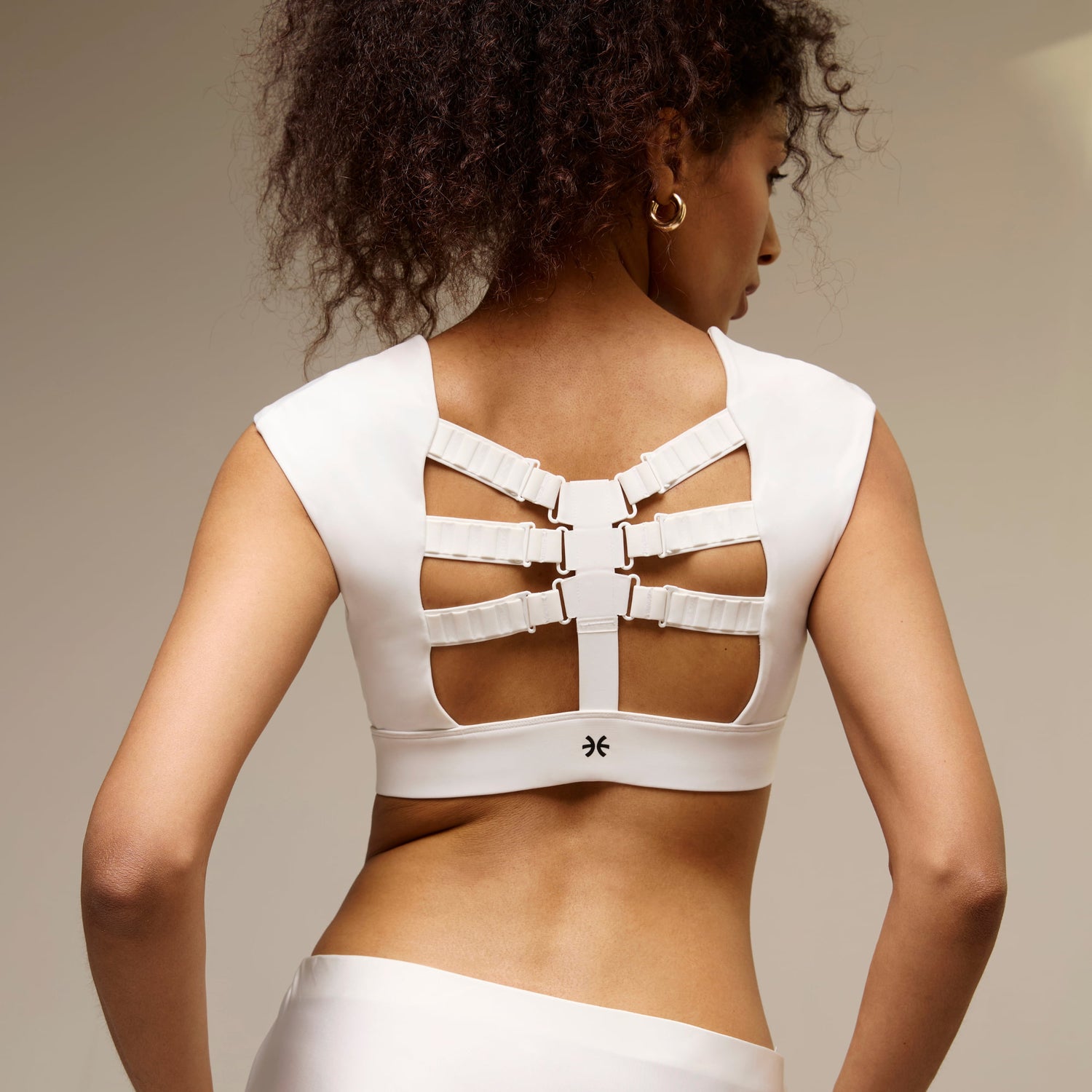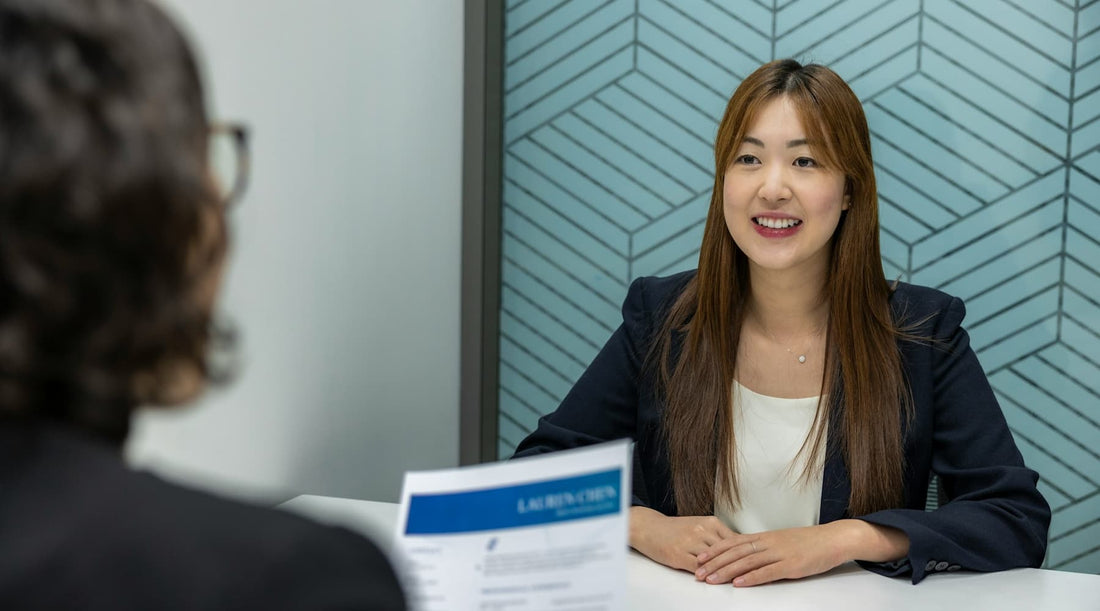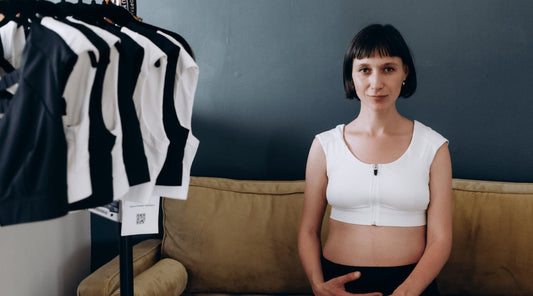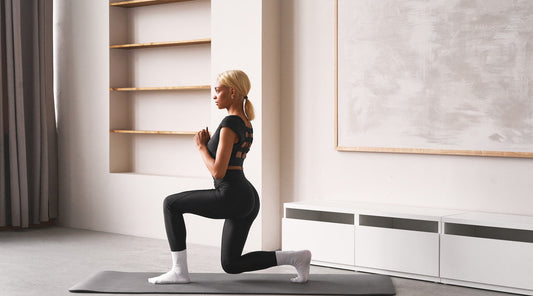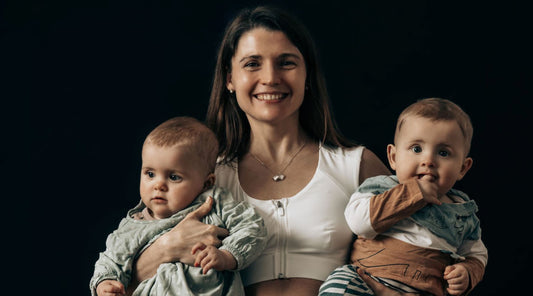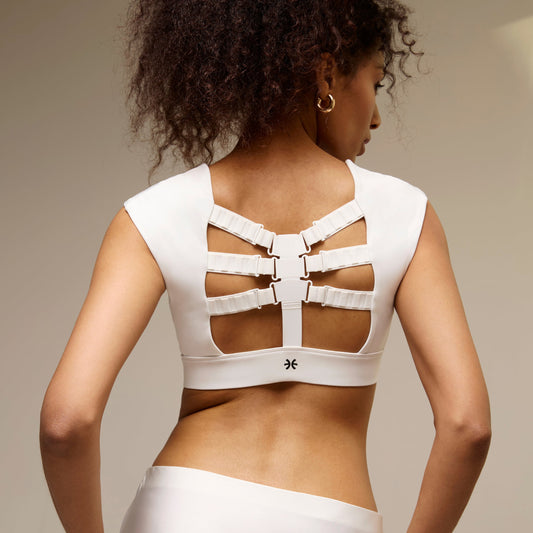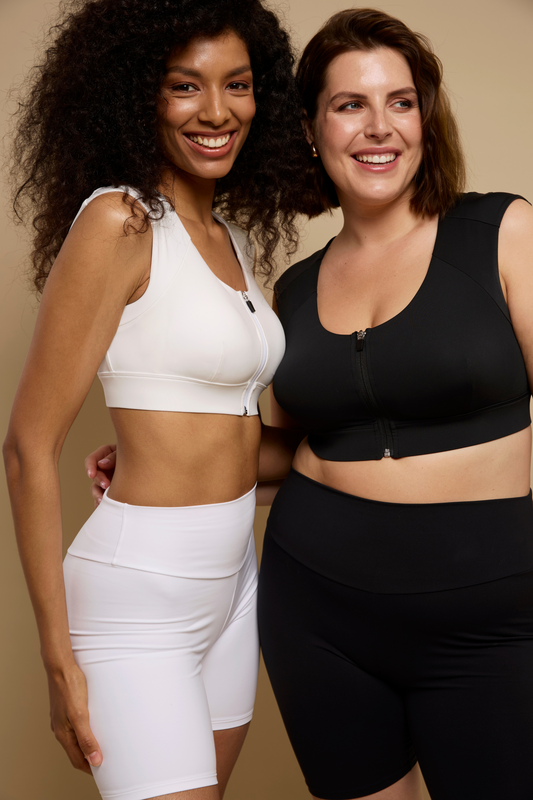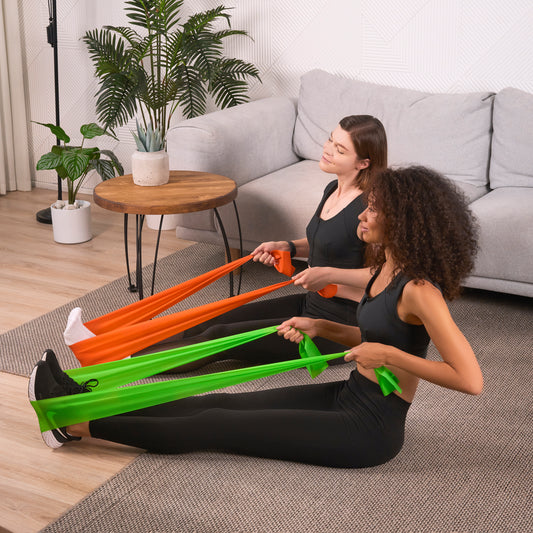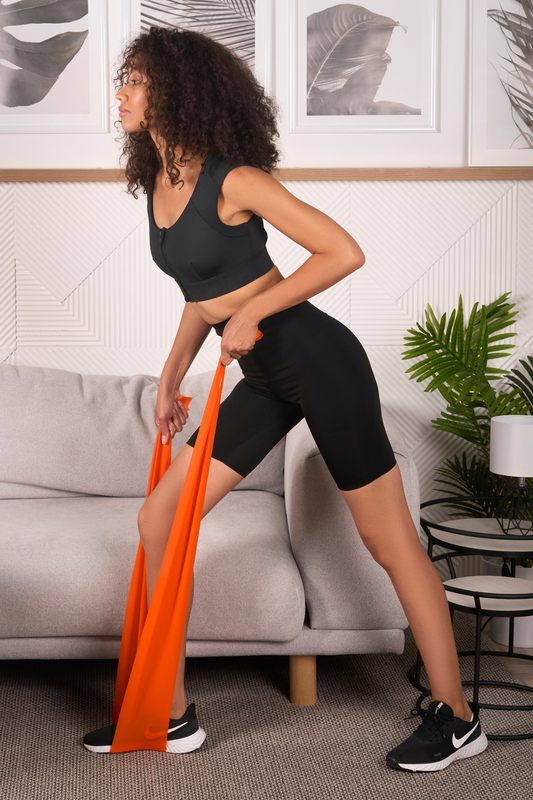The job market is more competitive than ever, and we keep hearing more and more stories about painstaking interview processes that end up going nowhere. We feel ya. Even if your resume hits every requirement and your experience surpasses all qualifications, you may struggle to show your true potential when sitting face to face with your (hopefully) future employer.
Looking good on paper will only get you so far. Looking confident in person (or online) may be the clincher. There’s been a lot of research on the power of nonverbal communication. Some claim that up to 90% of communication is done through body language, but it may be closer to just over half. Either way, nonverbal communication tends to beat out voice, tone, and the actual words you say (which may only account for 7%) (1).
So, when you’ve gotten the good news that you’ve made it to the interview stage, don’t just practice what you will say but how you will present yourself. How to sit during an interview is a life skill that extends well beyond securing a job. Keep reading to learn how to sit confidently in an interview, online or off.
How Posture Affects Your Interview Performance
Your posture can be your superpower — and it works from the inside out. When you sit or stand with good posture, you will not only look confident but feel it. Various studies have found that sitting upright is linked to a more positive mood, higher self-esteem, and greater confidence compared to a slumped position (2).
This means you can give yourself a boost just by shifting your posture. Because interview performance is not just about how the interviewer perceives you but how you perceive yourself.

What's the Best Way to Sit in an Interview?
Let’s be honest — interviews are often unnatural and uncomfortable. You can lessen the awkwardness by simply positioning yourself in a way that is comfortable for you while still conveying a sense of confidence and enthusiasm.
Even through a computer screen, an interviewer will be looking at your posture, gaze, facial expressions, and gestures to get a sense of your personality and attentiveness and how comfortable, anxious, engaged, and truthful you are.
Below are some valuable tips on how to sit during a job interview — something that may seem minor but could make or break your chances in getting that job offer.
How Do You Sit in an Interview to Look Confident?
Before sitting down for an interview, take 10 deep breaths. Long, deliberate inhales and exhales can help control your nerves and help you feel more focused (3).
If you’re able to choose the seat you sit in, opt for a chair with a straight back. Try to position the chair directly in front of the interviewer but give them some personal space, ideally at least 3 feet. As you settle in, do a quick body scan to get into a good sitting posture. Make sure you:
- Slide all the way back in the chair
- Keep both feet flat on the floor (try to avoid crossing your legs as it may cause you to fidget)
- Relax your shoulders
- Rest your hands on your lap, armrests, or table
- Look forward
Most of all, sit in a position that is comfortable. Any discomfort could distract you and sap some of your energy. See more tips on how to sit with good posture.
Common Mistakes in Interview Posture
When you’re nervous it can be easy to slip into bad habits without realizing it. Be mindful of some of these common mistakes when sitting down for an interview.
Fidgeting. Playing with your hair, tapping your foot, biting your nails, or constantly shifting positions can make you appear nervous and untrustworthy. Practicing good posture will help control any unnecessary movements.
Looking down or away. It’s natural to look away — you don’t want to stare down your interviewer, of course. But constantly looking down or shifting your eyes to the side can come across as anxious and even dishonest. If you’re interviewing with more than one person, first respond to the person who asked the question then look briefly at the others to acknowledge everyone’s presence.
Slouching. If you’re slumped over, your interviewer will likely perceive you as bored, lazy, or apathetic. Sitting upright will show a sense of alertness and enthusiasm. To avoid slouching, pull your shoulders back and down. If you struggle with this, consider wearing a posture correcting bra for posture correction during the interview.
Crossing your arms. Folding your arms in front of you shows defensiveness and discomfort. Relax your shoulders and free your hands. Let them rest on your lap or at the table in front of you and use your hands for emphasis — this can show assertiveness and enthusiasm — just don’t go too overboard with the gestures.
Nonverbal Communication Tips to Enhance Your Interview Performance
Remember that nonverbal communication often has a more powerful impact than the words that come out of your mouth. Use this knowledge to your advantage. To sit confidently in an interview, remember these tips:
Maintain eye contact. The easiest way to build trust is to look someone in the eyes. Position yourself in a way that enables easy eye contact — that’s usually directly across from the interviewer. If you have a video interview, practice talking into the camera instead of looking at yourself. When responding to a question, keep your gaze on the interviewer for around 10 seconds before looking away and then making eye contact again.
Lean forward. When listening or responding to a question, a slight lean in toward the interviewer or your screen will show that you’re interested and engaged. Just don’t lean in so far that you start to hunch forward.
Pull your shoulders back and down. To maintain a good sitting posture, relax your shoulders and slightly open up your chest. This will keep you looking and feeling alert and confident.
Use your head. There’s no need to be stiff. Nod to show that you’re paying attention and tilt your head every now and then to show you’re interested.
Take cues. Assess the interviewer’s own nonverbal communication to give you cues on the level of formality they expect and how they may be feeling during the interview. Do they look bored or distracted? Perhaps you need to reel in your answers.
Relax your jaw and don’t forget to smile. A genuine smile can help build rapport and show that you are affable and approachable. This should come naturally — don’t feel like you need to force it!
Practicing Your Interview Posture
The best sitting position for an interview is one that allows you to feel both comfortable and confident. As you prepare, try practicing in front of a mirror. Maintain eye contact with yourself and take a look at your posture. Are you keeping your feet flat on the ground? Are you relaxing your shoulders? Are you gesticulating (too much)? Do you look stiff?
Take notes and practice maintaining good posture throughout the day so that it comes as second nature.
Exercises to Improve Posture
In between practicing your responses, try these exercises to improve your posture:
- Child’s pose
- Forward fold
- High plank
- Cat-cow stretch
- Goalpost squeeze
- Chest opener
Wearing a posture corrector bra can also help train your body to build postural awareness and muscle memory.
The Power of Good Posture Beyond the Interview
Maintaining good posture will help you go well beyond just securing that job. The benefits of having good posture include reduced risk of back pain, increased confidence, boosted mood and energy levels, and even better cognitive function.
Now that you’ve got that interview scheduled, sit up with confidence and show ‘em what you got.
SOURCES:
- London Image Institute. How Much of Communication is Nonverbal? https://londonimageinstitute.com/how-much-of-communication-is-nonverbal/
- Health Psychology. Do slumped and upright postures affect stress responses? A randomized trial. https://psycnet.apa.org/record/2014-37739-001
- Inc.com. Stanford Neuroscientist: This 5-Second Breathing Technique Is the Fastest Way to Reduce Anxiety and Stress https://www.inc.com/jeff-haden/stanford-neuroscientist-this-5-second-breathing-technique-is-fastest-way-to-reduce-anxiety-stress.html
Photo by Resume Genius on Unsplash
FAQs
Why is it important to have good sitting posture in job interviews?
What is the best way to sit in an interview to appear confident?
How should I adjust my chair during a job interview?
What are some bad sitting habits I should avoid during an interview?
How can I practice good posture before my interview?
Trending
Try Etalon posture improvement products
